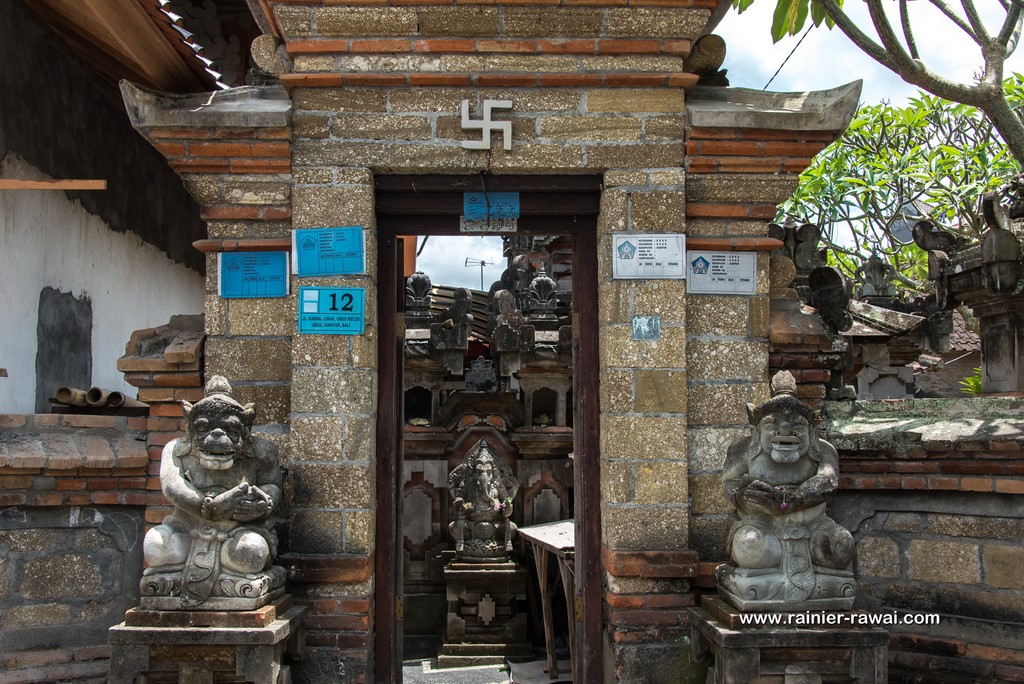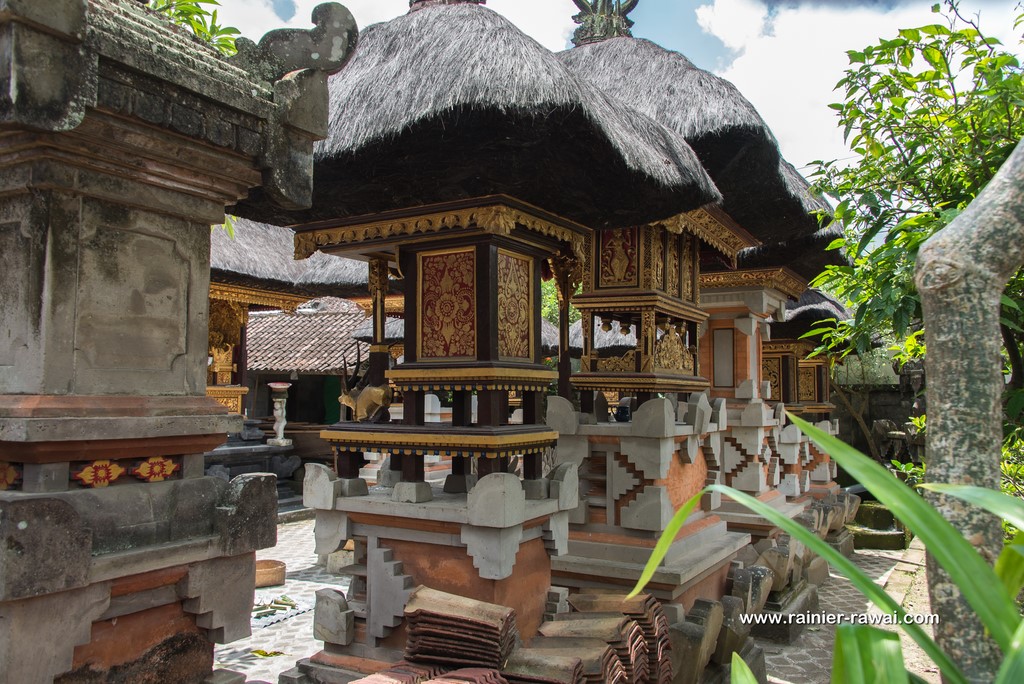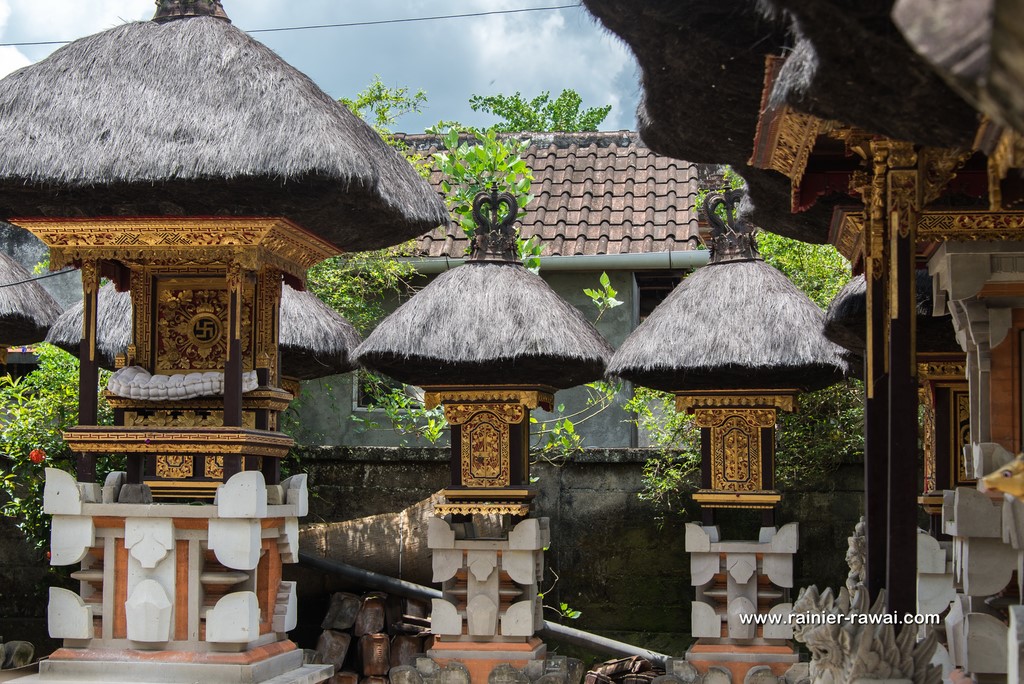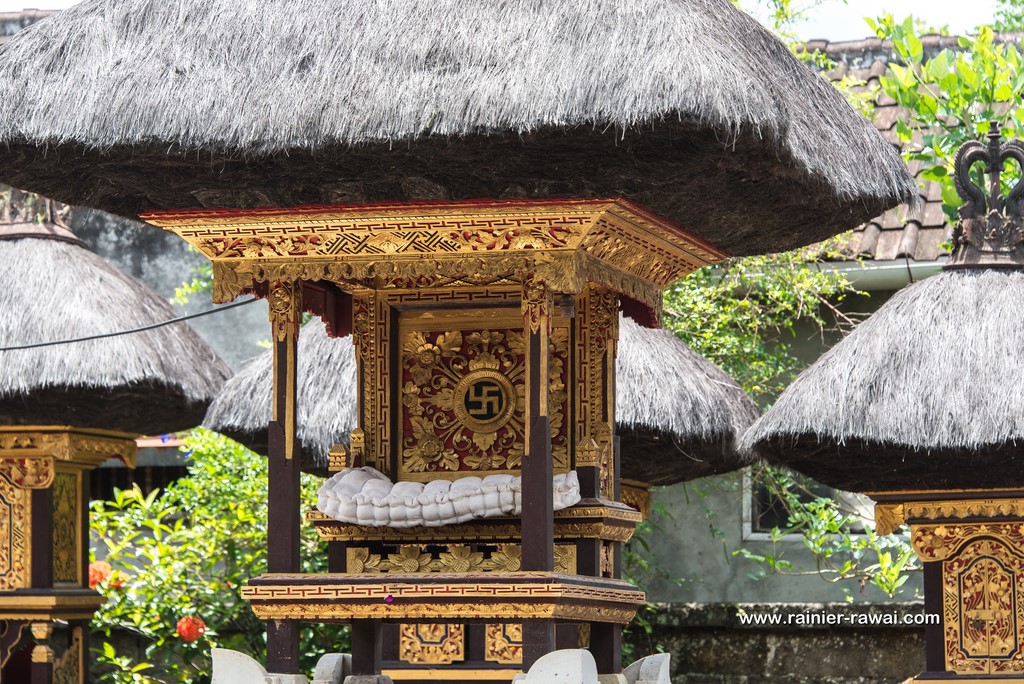UBUD in the heart of Bali
 UBUD
UBUD
The legend tells the story of an 8th century Javanese priest, Rsi Markendya, who meditated at the confluence of two rivers (a good site for Hindus) in the town of Campuhan. He founded the temple of Gunung Lebah at the bottom of the valley, a site that has become a place of pilgrimage.
The city was first an important source of medicinal plants. Ubud's name comes from the Indonesian word ubad, which means medicine.
At the end of the 19th century, Ubud became the seat of the feudal lords before allegiance to the King of Gianyar, at that time the most powerful of the states in South Bali. The lords were members of Sukawati's Ksatriya family. They have contributed to the promotion of the village, which is increasingly renowned for its art.
Tourism flourished with the arrival of Walter Spies: a native of Germany, born in Russia, he taught painting and music, and became interested in dance. Spies, along with foreign painters Willem Hofker and Rudolf Bonnet, attracted celebrities such as Charlie Chaplin, Noel Coward, Barbara Hutton, H. G. Wells, Margaret Mead, Gregory Bateson and Vicki Baum. They helped Ubud to become the cultural centre of Bali.
A new wave of creative energy arrived in the 1960s with the Dutch painter Arie Smit, and the development of the Young Artists Movement. There are many museums in Ubud, including the Puri Lukisan Museum, an excellent collection devoted to painting and sculpture from the 1930s, the Neka Museum, the famous collection of Mr Neka, an art lover from Ubud, and the Agung Rai Museum, where dance classes for the youngest are regularly held.
Since the late 1960s, Bali's tourism boom has contributed to the development of Ubud, but it remains above all a place of artistic quest.
Ubud is considered to be the centre of the island's cultural and artistic tourism. The main street is Jalan Raya Ubud (Jalan Raya means "main street"). It crosses the city centre from east to west, and includes many shops, cafés, restaurants and hotels.
Two other long streets, Jalan Monkey Forest and Jalan Hanoman, extend south of Jalan Raya Ubud. Near the traditional market, and at the intersection of Jalan Monkey Forest and Jalan Raya Ubud, is the vast Puri Saren Agung Palace. The house of Tjokorda Agung Gede Sukawati (1910-1978), the last "king" of Ubud, is now occupied by his descendants and dance performances take place in his courtyard. It is also one of the first hotels in Ubud, dating back to 1930.
The Ubud Monkey Forest is a sacred nature reserve located at the southern end of Jalan Monkey Forest. It houses the temple of Dalem Agung Padantegal and more than 200 long-tailed macaques (Macaca fascicularis).
Tourism is focused on culture, yoga and nature. Unlike the tourist hub of South Bali, Ubud is the domain of forests, rivers and cooler temperatures; far from the roadblocks that increased dramatically in the 21st century on the island. Hotel style shops are located in and around Ubud, which offer thermal cures, or hiking.
 The streets of Ubud
The streets of Ubud
It took me almost 2 hours to reach UBUD, but I'm not disappointed. This small town seems very pleasant, and I like the paintings, some of which almost make me crack... but I can't see myself on a motorcycle with a canvas, go back home... so it'll be for another time!
A short walk through the streets of Ubud under a blazing sun. I discover many restaurants, painting galleries, an old market with as it should be many merchants, and a kind of sanctuary where many women spend their time depositing Canang Sari these small flower trays which are testimonies of gratitude for the benefits that the gods give.
It's amazing how many people are believers and practitioners in Bali....
 The Royal Palace, Puri Saren Agung
The Royal Palace, Puri Saren Agung
It is a magnificent old palace where the gardens are very well maintained, with old stone doors and statues bearing familiar plaid fabric.
Puri Saren Agung is located in the centre of Ubud on the main road, opposite the Ubud market.
It was the house of the last king of Ubud, and now his descendants live there.
Regularly in the evening, visitors can attend local dances, rich in colour.
The swastika or swastika 卐, a Sanskrit word derived from su ("good") and asti ("it is") with the Sauvastika spelling variant sometimes attributed to its sinister symmetry 卍, is a symbol found in Eurasia, Africa, Oceania, the Americas (pre-Columbian America among the Mayas and Navajo and Kuna Amerindians) and the Far East. Its appearance began in the Neolithic period when it appeared in the pre-writing of the culture of Vinča. It can be described as a cross composed of four gallows in the form of a Greek gamma in capital (Γ), hence the name swastika which is sometimes given to it since its appearance in early Christian and Byzantine art.
This symbol is used in Asia in particular in Jain, Hindu and Buddhist symbolism, in China to symbolize eternity and in Buddhist Asia. In the West, the swastika pointing to the right, and generally inclined by 45 degrees, was adopted as an emblem by the Nazis and therefore acquired a strong negative connotation after the Second World War. Some minority and extremist political factions use it to link directly to this ideology (see Nazi Swastika).
In Asia, and especially in India, it is still an omnipresent symbol. It symbolizes, among other meanings, the very popular god Ganesh and is the primary symbol of Jainism, considered by its followers as the most favorable of all symbols.
 The Old Market in the heart of Ubud
The Old Market in the heart of Ubud
It's past noon... I'm starting to get quite a boost! the two hours of driving by motorbike, the blazing sun, the stroll in the streets, the visit to the royal palace, knocked me out.
This afternoon, I'm going to see the rice fields of Tagallalang, but now I think I'm going to make an exception, I'm going to buy a taxi driver!
Many of them offer their services... after all, why not make them work a little?
 My 6 days in detail...
My 6 days in detail...
At the beginning and at the end of this page, you can select in the "Summary" bar the different places visited in Bali...













































